The college football season is inching closer, which means the 2018 NFL draft will be here before you know it. The crew from Scouts Inc. and I spent the summer scouring tape and ranking the top draft prospects at each position.
I started last week with the defense, and so now it's time for the offense. And remember: These are preliminary rankings -- there's no telling who will emerge this season.
Click the links below to read our rankings of the positions we've evaluated so far:
DT | DE | OLB | ILB | CB | S | QB | RB | WR | TE | OL
Note: Underclassmen are marked with an asterisk.
Offensive linemen

1. Connor Williams, OT, Texas*
Grade: 90
A true junior who has started all 23 games in which he has appeared the past two seasons, Williams is a scheme versatile blocker. He anchors well, gets good initial hand placement and locks defenders out once he's latched on. He's our top offensive tackle prospect heading into the season.

2. Mike McGlinchey, OT, Notre Dame
Grade: 89
In 2016, McGlinchey moved from right to the left tackle spot vacated by Baltimore's first-round pick Ronnie Stanley. An above-average zone blocker, he plays angles well and gives good effort. Also has solid movement skills for his size (6-foot-7, 310). Has first-round potential, but needs to show it on a more consistent basis.

3. Quenton Nelson, OG, Notre Dame*
Grade: 88
Nelson is a road grader with the size (listed at 6-foot-5, 325 pounds), strength, polish and toughness to start immediately after he's drafted. He plays with a wide base and anchors well, and he picks up most blitzes and line stunts.

4. Billy Price, OG, Ohio State
Grade: 85
Price displays good awareness and is always looking to finish off defenders, seeking out extra contact. An experienced three-year starter heading into his senior year, he's a plug-and-play NFL starter who should be steady, even if he's never dominant.

5. Orlando Brown, OT, Oklahoma*
Grade: 85
The son of the late Orlando "Zeus" Brown, the younger Brown is a better fit at right tackle in the pros, though he has played exclusively at LT in a run-heavy Oklahoma scheme. He doesn't have elite lateral mobility and struggles to bend at times, but his wide base is tough to get around.
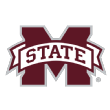
6. Martinas Rankin, OT, Mississippi State
Grade: 84
There's a lot of buzz surrounding Rankin, who is a JUCO transfer and has only one year of SEC experience. He has the length to handle speed off the edge and the athletic ability to mirror inside pass-rushing moves. Rankin has tremendous upside.

7. Chukwuma Okorafor, OT, Western Michigan
Grade: 83
A powerful run-blocker, Okorafor needs to deliver his initial punch more quickly in pass protection. A true senior, he's a developmental prospect who played only two years of high school football. He projects right now as a valuable swing tackle who could develop into a starter.

8. Tyrell Crosby, OT, Oregon
Grade: 82
Crosby missed much of the 2016 season with a foot injury, but he started 12 games at right tackle in 2015. He's a powerful run blocker who can move defensive linemen off the ball.
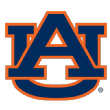
9. Braden Smith, OG, Auburn
Grade: 77
On the lighter side for an offensive line prospect (6-foot-5, 301 pounds), Smith has a good work ethic and is a highly intelligent player. He projects as a versatile backup who could be a starter in a zone-heavy scheme.

10. Will Clapp, OG, LSU*
Grade: 71
His father, Tommy Clapp, played DT for LSU in the 1980s. Tommy is expected to move to center in 2017, which could increase his value. He's a steady player who lacks elite physical tools.
Tight ends

1. Dallas Goedert, South Dakota State
Grade: 79
Goedert is coming off a breakout season (1,293 yards, 11 touchdowns) in which he showed his versatility. He has the athletic ability to give linebackers issues, and his size (listed at 6-foot-4, 258 pounds) is trouble for corners. He needs to follow the previous season with another good one and then do all he can during the postseason process.
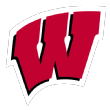
2. Troy Fumagalli, Wisconsin
Grade: 70
Starting all 14 games as a junior in 2016, Fumagalli led the team with 580 yards receiving and two touchdowns. He has just average physical tools and isn't very elusive after the catch, but he has worked hard to develop into a productive player. He projects as a middle-round pick.
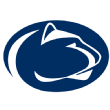
3. Mike Gesicki, Penn State
Grade: 65
A little plodding as a route runner, Gesicki has an excellent catch radius. His 679 receiving yards set a school record for tight ends at Penn State. He is a strong runner after the catch.

4. Mark Andrews, Oklahoma*
Grade: 52
There's a lot to like about Andrews' toughness, and he works hard as a blocker. He projects as a No. 3 NFL tight end at this point.

5. Durham Smythe, Notre Dame
Grade: 48
Smythe has only 13 receptions in his career, but he has been identified by Brian Kelly as the leader of a talented Fighting Irish tight end group. He brings a solid effort as a blocker.
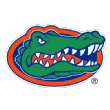
6. DeAndre Goolsby, Florida
Grade: 36
Goolsby flashes savvy as a route runner but isn't enough of a threat as a receiver to make up for his deficiencies in blocking.

7. Chris Herndon, Miami (FL)
Grade: 34
Filling David Njoku's role, Herndon is a bit of an unknown, and he lacks ideal speed.

8. Tyler Conklin, Central Michigan
Grade: 33
Conklin appeared in all 13 games last season and ranked third on the team in receptions (42) and receiving yards (560).
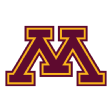
9. Brandon Lingen, Minnesota
Grade: 32
An Academic All-Big Ten performer, Lingen missed 10 games with an injury in 2016.

10. Marcus Baugh, Ohio State
Grade: 31
Baugh had shoulder surgery after the 2016 season and didn't engage in contact drills in the spring. He started 17 games combined the past two seasons.
Wide receivers
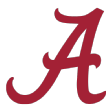
1. Calvin Ridley, Alabama
Grade: 91
Ridley played in 15 games (11 starts) as a freshman and started all 15 this past season. Although he has only average size (6-foot-1, 190 pounds) and can struggle getting off press coverage at times, he has outstanding foot quickness and is a nightmare in the open field. He also has good acceleration and is a willing blocker.
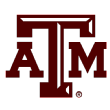
2. Christian Kirk, Texas A&M*
Grade: 90
Kirk hasn't been running an NFL route tree at Texas A&M, but he's a solid all-around player. He has soft hands and flashes the ability to make the tough catches with DBs all over him. He had 576 yards after the catch (eighth in the nation) in 2016, according to ESPN Stats & Info. He's also a dangerous punt returner (including three return touchdowns last season).

3. D.J. Chark, LSU
Grade: 80
With the departures of Travin Dural and Malachi Dupre to the NFL, Chark should get more targets as LSU's top option in 2017. He has been underutilized in his college career. I'd like to see him attack the ball with his hands more frequently, but he can track the deep ball and shows a good second gear in the open field.

4. Antonio Callaway, Florida*
Grade: 78
There are some definite character and off-the-field concerns for Callaway, but on the field he has the speed to threaten vertically and the burst to produce after the catch. His frame (listed at 5-foot-11, 197 pounds) could prevent him from being an NFL starter on the outside.

5. Courtland Sutton, SMU*
Grade: 75
A smooth route runner, Sutton flashes the ability to make the first defender miss after the catch, and he is faster than quick, with deceptive top-end speed.
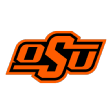
6. James Washington, Oklahoma State
Grade: 70
Washington's production (2,923 career receiving yards and 19.2 YPC) is inflated by the scheme in which he plays, and there are some concerns about the level of competition. His long arms (33.5 inches) ease concern about his lack of height (5-foot-10). Washington is a highly competitive player with a professional work ethic.

7. Dante Pettis, Washington*
Grade: 70
Pettis is a good vertical threat with top-end speed to beat defenders deep when he gets a clean release. He is also a dangerous punt returner but not as dangerous after the catch.

8. Deon Cain, Clemson*
Grade: 65
An underdeveloped route runner, Cain tracks the deep ball well and has above-average playing speed. He flashes good burst after the catch as well.
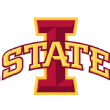
9. Allen Lazard, Iowa State
Grade: 64
Lazard is a big target (6-foot-4, 225 pounds) who can exploit pockets in zone looks. However, he isn't explosive in and out of breaks or after the catch.

10. Darren Carrington, Utah
Grade: 43
A developmental prospect with a lot of raw tools, Carrington has some off-field baggage. He was dismissed from Oregon in July after a DUI but is eligible to play as a graduate transfer at Utah.
Running backs

1. Saquon Barkley, Penn State*
Grade: 93
Despite missing two games in 2015 (11 games played, six starts), Barkley still broke Penn State's freshman rushing record with 1,076 yards. He was even better last season (1,496 yards, 5.5 yards per carry), and the numbers tell just part of the tale. Barkley has good balance and terrific lateral agility and can run away from the defense when he hits the second level. Barring injury, he should be the first back taken in the 2018 draft.

2. Derrius Guice, LSU*
Grade: 91
All Guice has done is average 8.5 YPC in 2015 and 7.6 in 2016, playing behind Leonard Fournette. How will he do with the chance to be the No. 1 back in Death Valley? He doesn't have Fournette's acceleration, but he has great quickness and the ability to stick his foot in the ground and hit a hole. His running style reminds me of Arian Foster.

3. Bo Scarbrough, Alabama*
Grade: 90
A big-time high school recruit, Scarbrough came on strong the final three games of 2016 before suffering a broken leg in the title game against Clemson. He runs behind his pads, and his body control and balance are outstanding. He has a nose for the sticks and the end zone, and he flashes a strong stiff arm. He is a very solid back.
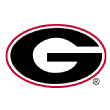
4. Nick Chubb, Georgia
Grade: 80
Chubb rushed for more than 100 yards in 13 straight games before tearing several knee ligaments (not including his ACL) in 2015. He didn't have the same explosiveness in 2016 coming off the injury, but he has quick feet for his size (listed at 5-foot-10, 228 pounds). Right now, he projects as a Day 2 pick, but he could move up the boards if he can regain some of that agility.

5. Akrum Wadley, Iowa
Grade: 75
Wadley was used sparingly his first two seasons, but he broke out last year, averaging an impressive 6.4 yards per carry in his junior season for the Hawkeyes. He showed his ability as a pass-catcher as well, generating 8.8 yards per catch on 36 receptions. He has elite lateral agility to make defenders miss in small spaces.

6. Kalen Ballage, Arizona State
Grade: 72
Ballage has a rare blend of size (6-foot-2, 233 pounds) and speed, which makes him a big-play threat every time he touches the ball. He runs too high at times and needs to take better care of the ball (1.9 percent career fumble rate).

7. Ronald Jones, USC*
Grade: 70
A sprinter on the USC track team, Jones has great top-end speed and is a decisive runner. Although not an overpowering back, he breaks a lot of attempted arm tackles and is a willing blocker in pass protection. He led USC with 1,082 yards and 12 touchdowns last season.

8. Royce Freeman, Oregon
Grade: 65
Freeman is patient as a runner and sets up his blocks well. He shows added value in the passing game, but his lack of breakaway speed is what makes him a projected middle-round pick.

9. Mark Walton, Miami (Fla.)*
Grade: 55
A standout sophomore campaign with 1,117 yards on 5.3 YPC and 14 touchdowns places Walton on this preseason list. A tiny back (listed at 5-foot-9, 205 pounds), Walton had six games last season with a run of at least 22 yards. He had a DUI last summer, among other off-the-field issues.

10. Jalen Hurd, Baylor
Grade: 51
Hurd has to sit out the 2017 season after the former Tennessee back transferred to Baylor, but he's a highly competitive runner. He is elusive, though he lacks top-end speed. He's practicing as a wide receiver for the Bears, but I like his upside as a running back.
Quarterbacks

1. Sam Darnold, USC*
Grade: 94
Darnold led a 1-3 USC team to a Rose Bowl appearance after being inserted in the starting lineup in 2016. Completing 67.2 percent of his passes (10th nationally), he threw for 3,086 yards and a 31-9 TD-INT ratio. Darnold capped the season with an impressive performance against Penn State in the Rose Bowl, tossing five TDs and going 10-of-10 for 135 yards in the fourth quarter. He can improve his ball security (nine fumbles, five lost), and his delivery is a bit long, but his accuracy is outstanding. He's an early Heisman Trophy favorite and is a more complete player than Josh Allen at this point.

2. Josh Allen, Wyoming*
Grade: 94
He is the best quarterback most college football fans have never heard of, and Allen can do everything on the field. He didn't have a single Division I scholarship offer in high school but transferred to Wyoming after a year at Reedley College. Allen has an elite arm and frame (listed at 6-foot-5, 233 pounds) and is surprisingly fast and athletic for his size. He can make any throw, and his accuracy is terrific when his feet are set. A little bit of a gunslinger at times, he has all the tools to be an elite NFL QB. If he comes out, he'll be in the running for the No. 1 pick in the 2018 NFL draft.

3. Josh Rosen, UCLA
Grade: 92
Rosen had a terrific 2015 season, becoming the first player to start at UCLA as a true freshman and throwing for 3,668 yards with 23 touchdowns and 11 interceptions. A shoulder injury cut his season short last year, and he needs to bounce back from a poor 2016. He has great accuracy and touch and gets the ball out on time, but he needs to improve his decision-making under pressure.

4. Luke Falk, Washington State
Grade: 84
The first senior on this list, Falk has put up gaudy numbers during his Washington State career, including throwing for 4,468 yards in 2016 (third in the nation), 38 touchdowns and only 11 interceptions. He's a rhythm passer with very good accuracy, but there are questions about his ability to adapt from Mike Leach's passer-friendly spread offense. He has the tools to be a special player.

5. Mason Rudolph, Oklahoma State
Grade: 72
Rudolph improved upon a good 2015 campaign with a better 2016, throwing for more than 4,000 yards with 28 touchdowns and only four interceptions. He has the frame (listed at 6-foot-4, 233 pounds) and mental makeup that you look for, but his below-average arm strength is a concern and could hold him back.
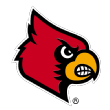
6. Lamar Jackson, Louisville*
Grade: 61
The 2016 Heisman winner (the youngest ever to win the trophy) was the talk of college football last season, especially through the first nine games as he racked up 45 touchdowns (including rushing and receiving) to only six interceptions. Why is he ranked so low then? For one, he was sacked 22 times in the final three games, as teams seemed to figure him out. He must improve his accuracy.

7. Nick Fitzgerald, Mississippi State
Grade: 60
Fitzgerald was impressive in his first season as a starter at Mississippi State, as it isn't an easy job being the guy to replace Dak Prescott. A dual-threat college quarterback, he'd be well-served by returning for the 2018 season, regardless of how the 2017 season goes.
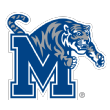
8. Riley Ferguson, Memphis
Grade: 53
A junior-college transfer by way of Tennessee, Ferguson completed 63 percent of his passes for nearly 3,700 yards, 32 touchdowns and 10 interceptions in his first season as a starter.

9. Baker Mayfield, Oklahoma
Grade: 52
A former walk-on and Texas Tech transfer, Mayfield is going into his third season as Oklahoma's starter. He had an excellent 2016 campaign, finishing third in the Heisman voting. That follows a fourth place Heisman finish in 2015. Mayfield has the mobility, accuracy and football IQ you look for, but I'm concerned about his frame (listed at 6-foot-0, 205 pounds) and arm strength to put the ball in tight windows in the NFL. He projects as a career backup, which makes him a Day 3 prospect.

10. Matt Linehan, Idaho
Grade: 31
A second-team all-Sun Belt choice, Linehan continues to make his mark on the Idaho record books. He's among Idaho's all-time leaders in a variety of statistical categories.
Safeties

1. Derwin James, Florida State*
Grade: 92
A redshirt sophomore, James tore the lateral meniscus in his left knee in the second game of 2016 and received a medical redshirt. He also underwent surgery for a fractured foot in the 2016 offseason, so durability is a concern. When he's on the field? He's one of the most versatile players we've ever evaluated. He's a physical presence in the middle of the field, but can run with tight ends and breaks well on the ball. If James is healthy, he can be a top-10 pick.

2. Minkah Fitzpatrick, Alabama*
Grade: 91
Fitzpatrick played 14 of 15 games as a true freshman in 2015 and started all 15 in 2016, including a team-high six INTs. He struggles in off-man coverage, and is better suited to press-man and the line of scrimmage. He also made an impact on special teams and when he was moved to free safety late in the season. Still developing, Fitzpatrick has an intriguing skill set. A strong 2017 season could land him in Round 1.

3. Ronnie Harrison, Alabama*
Grade: 86
A free safety with the ability to play nickelback, Harrison has good top-end speed and range in a deep zone. He has some tightness when playing man-to-man and his ball skills need to improve, but he really grew on me during film study. He has the potential to be a starting free safety in the NFL.

4. Godwin Igwebuike, Northwestern
Grade: 80
Igwebuike has started 31 of 37 games he has played in at Northwestern. He can play zone or line up over the slot or in the box, and he has good route recognition. He can, however, get caught out of position gambling for big plays.

5. Armani Watts, Texas A&M
Grade: 79
Watts tore his hamstring in 2016, but has said he's fully healthy for the season. He has just average size but is above average in a lot of areas, including coverage, run support and ball skills. He could work his way into being a Day 2 pick.

6. Tre Flowers, Oklahoma State
Grade: 74
A leaner safety, Flowers shows some tightness in his hips, and he isn't a big playmaker. His quick feet, balance and good length help mask those deficiencies in coverage.

7. Kyzir White, West Virginia
Grade: 70
White, a junior-college transfer, played well in his first season at West Virginia, collecting 58 tackles, 7 TFL and 3.0 sacks. He projects as a strong safety who has excellent size and length. He needs to play in a zone scheme.

8. Jordan Whitehead, Pittsburgh*
Grade: 67
Whitehead is a tweener safety/corner who isn't big enough to regularly play in the box. He closes well, but his erratic tackling and his size are concerns.

9. Dominick Sanders, Georgia
Grade: 52
A three-year starter, Sanders is a playmaker with above-average ball skills. However, he's an undersized prospect with only average top-end speed.

10. Quin Blanding, Virginia
Grade: 50
Blanding is a hard worker on and off the field. He has started every game of his college career (true senior) and has enough range to cover the deep half. He shows some tightness in his hips but is an intriguing Day 3 prospect.
Cornerback

1. Anthony Averett, Alabama
Grade: 89
Averett burst onto the scene at Alabama in 2016 after being mostly a special-teamer in 2015 and playing sparingly in 2014. He does a nice job jamming wide receivers at the line of scrimmage, wraps up as a tackler and is very instinctive, though he didn't have any INTs last season. He's a little grabby at times, but his 2016 tape was still impressive. He's a very solid player.
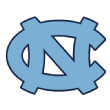
2. M.J. Stewart, North Carolina
Grade: 86
An instinctive cover corner, Stewart has average size (listed at 5-foot- 10, 195 pounds), plays fast and has good recovery speed. He's also an excellent, physical run defender who can wrap up. He didn't have any INTs last season -- he had four in 2015 -- but displayed good ball skills.

3. Tarvarus McFadden, Florida State*
Grade: 85
McFadden needs to fill out his frame a bit (listed at 6-foot-2, 198 pounds), but he's at his best in press. He has the length to disrupt receivers and the top-end speed to run with most receivers. He can read quarterbacks and diagnose in zone as well.

4. Kevin Toliver II, LSU*
Grade: 82
Injuries have been an issue for Tolliver (torn rotator cuff in high school, torn labrum in college), but he's otherwise capable of lining up all over the field. Toliver is a solid wrap-up tackler.

5. Iman Marshall, USC*
Grade: 80
A five-star recruit coming out of high school (ESPN's No. 4-ranked player), Marshall has an impressive 118 tackles, 17 passes broken up and six interceptions in his first two seasons at USC. He's good in press coverage, but doesn't have elite recovery speed. He needs to be more consistent.

6. Rashard Fant, Indiana
Grade: 74
Fant is the NCAA's active career leader with 48 passes defensed. He's comfortable playing on an island and has foot speed, balance and recovery burst to keep with receivers. His size (listed at 5-foot-9, 177 pounds) is a concern, but he has a high floor.

7. Jordan Thomas, Oklahoma
Grade: 73
There are some off-the-field concerns with Thomas, but on the field he has the potential to play on the outside and flashes as a playmaker. He gets caught out of position too much for a player with his talent. He is one of the most inconsistent players in this class.

8. Jaire Alexander, Louisville*
Grade: 72
Alexander's technique is a little erratic, but he's disciplined in coverage and fast enough to stay on a receiver's hip in press coverage. He's dynamic and shifty as a return man.

9. Adonis Alexander, Virginia Tech*
Grade: 70
A press/zone corner, Alexander does a nice job playing the ball and not the man. He's a versatile defensive back and projects as a No. 2 corner in a press/zone-heavy scheme.

10. Jamar Summers, UConn
Grade: 69
Another versatile defensive back, Summers had a very poor game against Syracuse in 2016, but is a solid overall player. He can play all over the defensive backfield and exhibits good range.
Outside linebacker

1. Harold Landry, Boston College
Grade: 93
Landry led the nation with 16.5 sacks and seven forced fumbles last season. He's an explosive edge rusher with terrific burst, bend and closing speed coming off the edge. I have slight concerns about his length and frame -- he's listed at 6-foot-3, 250 pounds -- but he should be an effective NFL defender and projects as an every-down player.

2. Malik Jefferson, Texas*
Grade: 88
Jefferson is an athletically gifted player with a high ceiling. He possesses the range to develop into an effective zone defender and really plays sideline to sideline. An above-average tackler with sound body control, he needs to flesh out his pass-rushing moves. I'd also like to see more physicality, and the production doesn't match the talent (8.0 sacks, 15,5 TFL in two seasons). He projects as a Day 2 pick at this point.

3. Keishawn Bierria, Washington
Grade: 83
An undersized linebacker, Bierria plays hard and has good range against the run. He times blitzes well and is at his best when he's protected up front and able to flow to the ball. With above-average balance and redirect skills, his issues are mostly due to his size and take-on skills. He can get stuck on blocks too long.

4. Lorenzo Carter, Georgia
Grade: 79
Carter is a light 3-4 OLB prospect who needs to fill out his 6-foot-6 frame, but he has the tools to develop into a three-down NFL player. Carter has issues when teams run at him, but he has the ability to slip blocks and win with quickness.

5. Porter Gustin, USC*
Grade: 79
Gustin is an instinctive and active player who always seems to be around the ball. He does a good job setting the edge and keeping blockers off his pads. He's a productive 3-4 OLB prospect with some scheme versatility, but he isn't a special athlete. Most of his sacks (11.0 in his college career) are effort based.
Inside linebacker

1. Azeem Victor, Washington
Grade: 83
Victor started the first 10 games last season until fracturing a bone in his tibia against USC, which kept him out the rest of the year. He's atop this list because he does everything well. He's a good tackler, has solid take-on skills and is a good athlete in coverage. He really plays his tail off. He's likely a Day 2 pick right now.

2. Rashaan Evans, Alabama
Grade: 71
Evans worked his way onto the field as a situational pass-rusher and special-teams standout in 2014 and 2015 before taking over as a starter in the College Football Playoff, after Shaun Dion Hamilton sustained a season-ending injury. He has a solid closing burst, flies around the field and is adequate in coverage, but he needs more game experience.
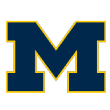
3. Mike McCray, Michigan
Grade: 70
His father was a captain at Ohio State, but McCray took his talents to the Maize and Blue. He's an above-average tackler who masks his average playing speed by taking good angles to the ball. He started all 13 games last season, finishing with 76 tackles, 12.5 TFL, 4.5 sacks and two interceptions (including one returned for a TD).

4. Jack Cichy, Wisconsin*
Grade: 69
A versatile linebacker with experience inside and outside, Cichy's 2016 season was cut short by a torn pectoral muscle in Week 7 against Iowa. He has a good feel in zone coverage and is a tough leader. He's likely a mid-round pick who can contribute immediately on special teams. Update: The Badgers announced Thursday that Cichy tore his ACL in practice.

5. Chris Worley, Ohio State
Grade: 68
A run-and-hit linebacker, Worley is a hard worker and a tough player. He's likely a 4-3 weakside linebacker in the NFL, but needs to continue to improve his take-on skills and strength.
Defensive end

1. Arden Key, LSU*
Grade: 93
Key started as a true freshman in 2015 and set the LSU single-season sack record (12) last season in just 11 games, finishing with 56 tackles and 14.5 tackles for loss. He's naturally instinctive as a pass-rusher, and his tall, lean frame reminds me of Jason Taylor's. He has tremendous natural ability, but there are questions -- he missed spring practice for personal reasons and is recovering from shoulder surgery.

2. Sam Hubbard, Ohio State*
Grade: 89
A former safety and linebacker who switched to end before the 2015 season, Hubbard has a quick first step with the speed to threaten the edge. Coach Urban Meyer has praised Hubbard's work ethic, and Hubbard is extremely versatile. If he comes out, he could be a first-round pick.

3. Josh Sweat, Florida State*
Grade: 86
Sweat has amassed 82 tackles (16 TFLs) and nine sacks while starting in 19 of the 25 games he's appeared in. He plays with good pad level and is a stout run defender for his size. He's just scratching the surface of his potential as a pass-rusher.

4. Trevon Young, Louisville
Grade: 85
Young is still a bit of a mystery after redshirting in 2016 as a result of a fractured hip. He is just OK as a run defender, but he has outstanding speed and athleticism as a pass-rusher. There's a lot of potential here if he can come back healthy this season.
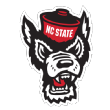
5. Bradley Chubb, NC State
Grade: 84
Chubb is a two-year starter and 2016 team captain. He ended the 2016 season ranked fourth in the nation with 22 tackles for loss. He isn't an elite pass-rusher, but he has a good first step and bends well for his size. There's room for improvement in getting off blocks.

6. Christian Wilkins, Clemson*
Grade: 83
Wilkins is a disruptive run defender with the foot speed and quick hands to slip blocks rapidly. He doesn't project as an elite edge rusher, but he is a high-motor guy who does a great job getting his hands up in passing windows. He had 140 tackles (17.5 TFLs) and 5.5 sacks over the past two seasons.
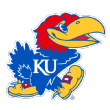
7. Dorance Armstrong Jr., Kansas*
Grade: 80
Armstrong broke out last season with 10 sacks, 20 TFLs and three forced fumbles. He reportedly was also playing on a partially torn ACL in his right knee, which makes the performance more impressive but also raises durability concerns. Kansas moves him all around the defensive line, and he can stand up at outside linebacker as well.

8. Jalyn Holmes, Ohio State
Grade: 76
Holmes has appeared in 36 games over three seasons in Columbus and is an ascending talent. A long, well-built defensive end, he has some upside as a pass-rusher, but isn't overly fast or twitchy. He has the tools to develop into an NFL starter.

9. Tyquan Lewis, Ohio State
Grade: 72
Lewis started all 13 games (despite offseason shoulder surgery) and led the team with 10.5 TFLs and eight sacks as a fourth-year junior in 2016. A power rusher, he demonstrates good ability to turn speed to power. He can also set the edge.

10. James Hearns, Louisville
Grade: 71
Hearns took over as a full-time starter last season and was productive (43 tackles, 11 TFLs, eight sacks). He missed Louisville's bowl game after sustaining gunshot wounds at an off-campus party, but he should be 100 percent for this season. Although a good pass-rusher, he's just an adequate run defender.
Defensive tackle

1. Maurice Hurst, Michigan
Grade: 91
Despite being a backup the past two seasons, Hurst has been extremely productive. He has notched 68 tackles, 18 tackles for loss and 7.5 sacks. While slightly undersized -- listed at 6-foot-2, 282 pounds -- Hurst is a quick and powerful one-gap penetrator who is highly disruptive against the run. He has a powerful upper body and disengages quickly. He projects as a future NFL starter and top-40 pick.

2. Derrick Nnadi, Florida State
Grade: 88
A two-year starter, Nnadi is coming off his most productive season (49 tackles, 10.5 TFLs, six sacks). He is an outstanding run defender and consistently displays a low center of gravity to occupy multiple blockers. His draft stock may be hurt if he's viewed as only a two-down player, as he's not an elite interior pass-rusher.

3. Vita Vea, Washington*
Grade: 88
Listed at 6-foot-4, 346 pounds, the former high school running back is a mammoth of a man. He has a powerful upper body, tree trunks for legs and wins most one-on-one battles. He has a quick get-off when he anticipates the snap count and displays good effort when he's on the field. With an impressive skill set, the question is how long Vita can stay on the field. His weight, self-discipline and conditioning will be key for his draft stock.

4. Da'Ron Payne, Alabama*
Grade: 82
A stud against the run, Payne requires a double-team to be stopped. He is the space-eater for Alabama's sensational defense and displays elite balance and heavy hands. He has limited upside as a pass-rusher, though, which hurts his NFL ceiling.

5. Lowell Lotulelei, Utah
Grade: 79
The younger brother of former Utes standout Star Lotulelei, Lowell has been a starter since he was a true freshman in 2014. He has good agility for his size and is a powerful bull rusher, but that's his main move. He needs to keep his pad level lower and improve as a pass-rusher.

6. Trenton Thompson, Georgia*
Grade: 59
Thompson is a true junior who has started 13 of the 25 games that he has appeared in over the past two seasons. He's a disruptive run-stopper who is at his best shooting gaps, but is versatile enough to play 3-technique in a 4-3 or play 3-4 defensive end. His health (offseason shoulder surgery, adverse reaction to medication) will be one to monitor.

7. Jerry Tillery, Notre Dame*
Grade: 55
Tillery has some character concerns and doesn't offer much as a pass-rusher (one career sack). He flashes the ability to sidestep blocks and get in the backfield. His best fit might be as a 3-4 end.

8. Daylon Mack, Texas A&M*
Grade: 50
The first thing that stands out about Mack is that he's freakishly strong. In March 2015, he was reported to have squatted 605 pounds 10 times. He has a quick first step on the field as well, but needs to keep his weight in check to stay on the field.

9. Zaycoven Henderson, Texas A&M
Grade: 40
Henderson had an impressive 10 TFLs and three sacks while starting all 13 games at tackle for the Aggies in 2016. He had at least one TFL in eight games, which led the team.

10. Justin Jones, NC State
Grade: 35
An honorable mention All-ACC performer in 2016, Jones is stout against the run and has transformed his body in the weight room. He had 6.5 TFLs and three sacks last season.
